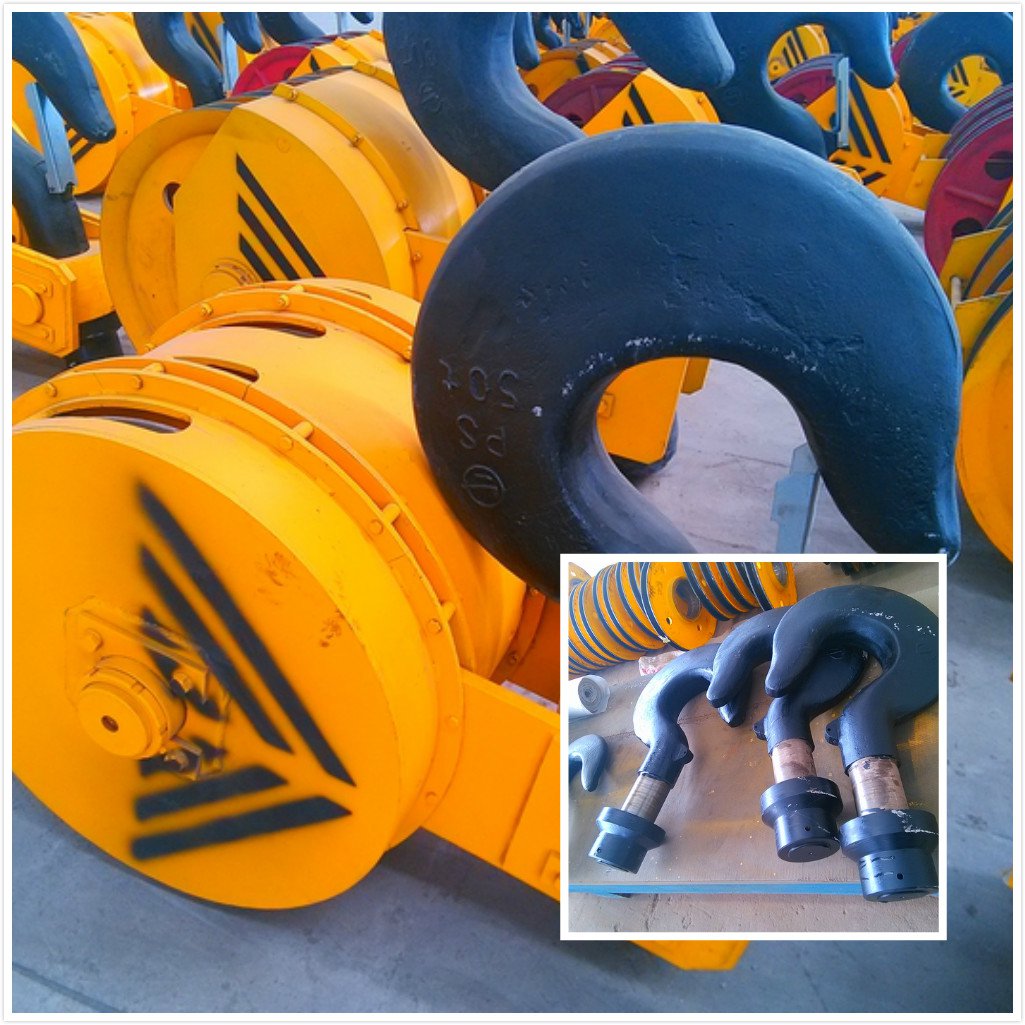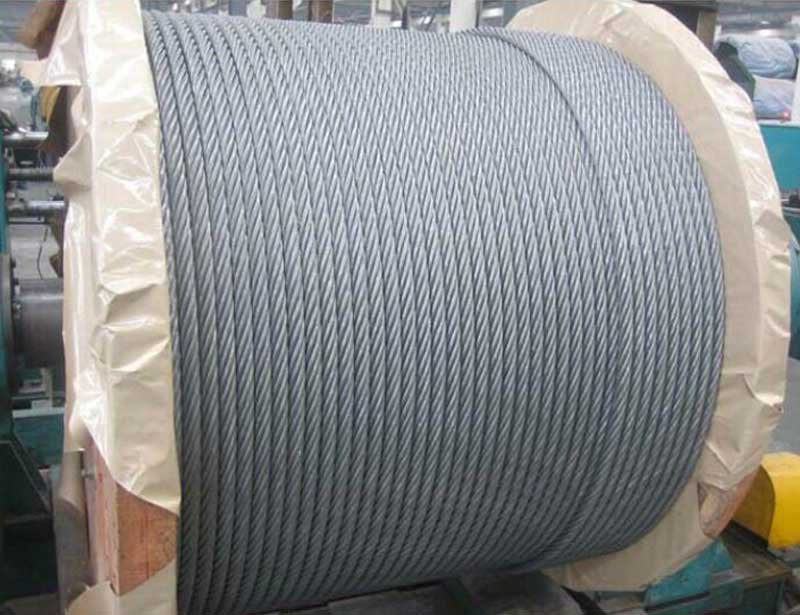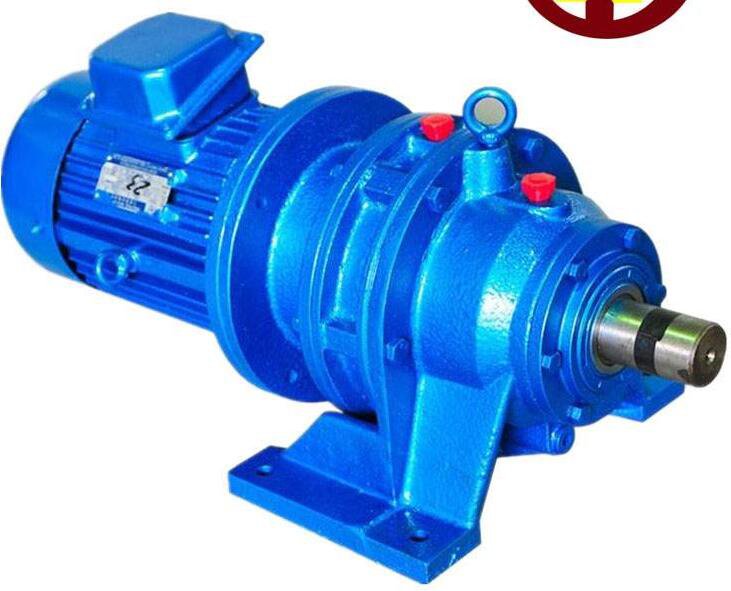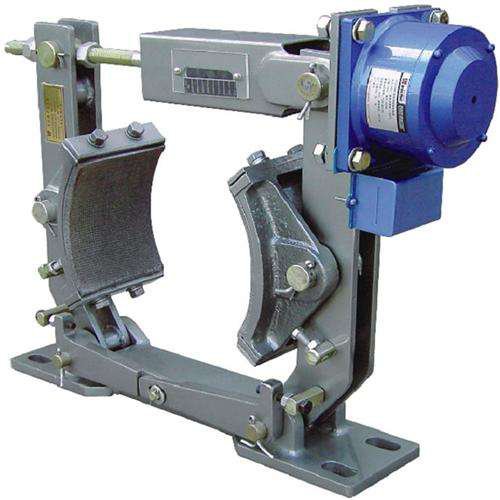Cranes are multi-action cranes that lift vertically and carry heavy objects horizontally within a certain range. They are also called cranes. Bridge crane is a kind of lifting appliance widely used in industrial and mining enterprises. Whether it can work normally affects the completion of the maintenance task of the locomotive and the safety of personnel and equipment. Let's analyze the common faults of bridge cranes and how to troubleshoot them.
Hook
The hook is the most widely used picking device for bridge cranes. It bears the full load of the crane. In the course of use, the hooks can easily cause major accidents if they are damaged or broken. The cause of damage and breakage of the hook is due to friction and overload, which causes the hook to crack, deform, and break. In order to prevent the failure of the hook, it is necessary to prohibit overloading during use. During the inspection process, attention should be paid to the opening degree of the hook and the wear of the dangerous section. At the same time, the hook should be annealed periodically. Found that cracks should be scrapped in accordance with GB10051-88, and do not repair the hooks. Special equipment managers shall check the hooks according to the requirements of GB 10051-88 to determine whether the hooks can be used.

Wire rope
1 failure analysis
During the operation of the steel wire rope, the stress of each steel wire rope is very complicated. Because the position of each steel wire in the rope is different, some are in the outer layer and some are in the inner layer. Even with the simplest stretching force, the distribution of force between each wire rope is different. In addition, when the wire rope bypasses the coil, the pulley generates bending stress, and the wire and wire press force, etc., so the force is accurately calculated. More difficult, the general use of static calculations.
The maximum static tensile force in the wire rope should meet the following requirements:
Pmax ≤ Pd/n
Where: Pmax - the maximum static stress that the wire rope can withstand;
Pd—breaking stress of wire rope;
n - safety factor.
Pmax=(Q+q)/(aη)
In the formula: Q—the rated lifting weight of the crane;
q - hook group weight;
A—the total number of rope branches carried by the pulley block;
η - the total efficiency of the pulley block.
The maximum allowable working tension of the wire rope is calculated as: P=Pd/n
In the formula: P——maximal static stress rating during wire rope operation
P≥Pmax is safe. It can be seen that the main reason for the breaking of the steel wire rope is overload, and it is also related to the number of windings on the pulley and the reel. Each time the wire rope is wound around, the process of straightening and bending is straightened, and the number of winding times is increased. It is easy to damage and break; secondly, the breakage of the wire rope is related to the pulley, the diameter of the reel, the working environment, the type of work, and the maintenance situation.
2 preventive measures
2.1 The crane shall not exceed the rated capacity in the process of operation.
2.2 The steel wire rope of the crane should select the suitable wire rope according to the type of work and the environment.
2.3 Regularly lubricate the wire rope (determine the lubrication cycle according to the working environment).
2.4 Do not subject the wire rope to sudden impact during operation.
2.5 Wire ropes in high temperature and corrosive media shall have isolation devices.

Reducer gear
1 failure analysis
The reducer is an important transmission component of the bridge crane. Through the meshing of the gears, the torque is transmitted, and the high-speed operation of the motor is adjusted to the required rotation speed. During the transmission of the torque, the gears may break off the gear teeth, pit the surface of the teeth, and treat the tooth surface. Mechanical faults such as wear and tooth surface wear cause gear failures to be as follows:
a. Short-term overload or shock load, repeated fatigue caused by bending fracture;
b. The tooth surface is not smooth, there is a convex point to produce stress concentration, or the lubricant is not clean;
c. Lubrication failure due to excessive temperature;
d. Wear due to the entry of hard particles into the friction surface.
2 preventive measures
a. The crane can not be used for loading, starting and braking should be slow and steady, and it is forbidden to play anti-vehicle suddenly under non-specific circumstances;
b. Replace the lubricant in time, clean the housing, and select the appropriate type of lubricant;
c. Always check that the lubricating oil is clean; replace the lubricating oil if it is found to be dirty.
Reel and wire rope clamp
The reel is an important force component of the crane. In the process of use, there will be wall thinning, holes and fracture failure. The cause of these failures is the contact between the drum and the wire rope and their mutual compression and friction. When the drum is thinned to a certain degree, it breaks due to the pressure applied by the wire rope. In order to prevent the occurrence of this kind of mechanical accident of the reel, in accordance with national standards, the drum wall wear of the reel should reach 20% or the occurrence of cracks should be promptly replaced. At the same time pay attention to environmental sanitation and lubrication of reels and wire ropes.

Brakes
1 failure analysis
The brake is an important safety component of the bridge crane. It has the function of stopping falling objects and achieving parking. Only the intact brake can ensure the accuracy of crane operation and safe production. In the crane operation, the brake will have insufficient braking force. The brake suddenly malfunctions, the brake wheel temperature is too high, the brake gasket smokes, and the brake arm cannot open. The causes of these mechanical failures are analyzed as follows:
a. Brake belt or brake wheel wear too much; brake with a small piece of local fall off; the main spring is too loose; there is grease between the brake belt and the brake wheel; there is a stuck outside the living hinge or Excessively worn parts; Loosening of the locking nut by loosening of the entire tie rod; Rotation of the impeller of the hydraulic pusher to loose the lock is not flexible;
b. The brake pads are severe or large pieces fall off, or the long-stroke electromagnets are stuck, the main spring fails, or the main parts of the brake are damaged;
c. The clearance between brake and gasket is too large or too small;
d. The place where the hinge is stuck or the brake torque is too large, or the oil in the hydraulic pushrod loose cylinder is mixed with air, or the grease used in the hydraulic pushrod loose lock does not meet the requirements, or the brake pad There is dirt between the brake wheel.
2 preventive measures
The brakes are checked and maintained on a regular basis. The brakes of the lifting mechanism must be used once per shift. The brakes of the operating mechanism are to be used once a day. The main contents are as follows:
a. Are there any seizures and wear in the hinges, and there is no slack in the fastening areas;
b. whether the movement of each movable part is normal;
c. whether the hydraulic system is normal;
d. Whether the wear between the brake wheel and the brake belt is normal and clean.
According to the inspection conditions to determine whether the brake is normal, and resolutely put an end to sick operation, at the same time the brake should be regularly lubricated and maintained. In order to ensure the safe operation of the crane, the brake must be constantly adjusted to ensure the working requirements of the corresponding agencies. Wheels and tracks
The common failure of the wheel and track during the operation of the crane is the unequal height and slipping of the wheel ramp and the trolley. There are many reasons for the martyrdom, and the form of martyrdom is varied. The rampage will affect the life of the cranes, and serious ones will cause serious casualties. Therefore, the special equipment management personnel should pay enough attention to the ramp.
The main cause of the ramp is the non-conforming error, non-uniform friction and excessive wear of components in the drive system of the vehicle during installation, and excessively large gaps in the key connections, resulting in unsynchronized braking. Therefore, the special equipment authorities of all units must find qualified units to install and maintain the cranes during the installation and maintenance of the cranes, so as to ensure equipment safety and operating life; at the same time, the special equipment management personnel should strengthen the usual inspection and management to avoid the occurrence of cranes. In the inspection process, the cause of the mechanical failure must be carefully and meticulously identified the cause of the ramp and take appropriate measures.

The unequal height of the wheel of the trolley is an extremely unsafe factor in the operation of the crane. The unequal speed of the trolley can cause one wheel of the trolley to float or the wheel pressure to be too small in the operation may cause the vibration of the body of the trolley. The factors causing the unequal height of the wheel of the trolley are caused by multiple reasons, but the main reason is that the installation error does not meet the requirements and the weight of the trolley design itself is not uniform. Therefore, the failure of the trolley must be comprehensively analyzed and the trolley must be sorted. The high problem is solved well.
During the operation of the crane, due to unclear track, excessive start, uneven track of the trolley, elliptical wheels, and unequal wheel pressure between the driving wheels, the trolley generates slip rings. This requires special equipment managers to check the process. Must be careful in the middle, found that the problem should be solved in time to avoid the phenomenon of slipping